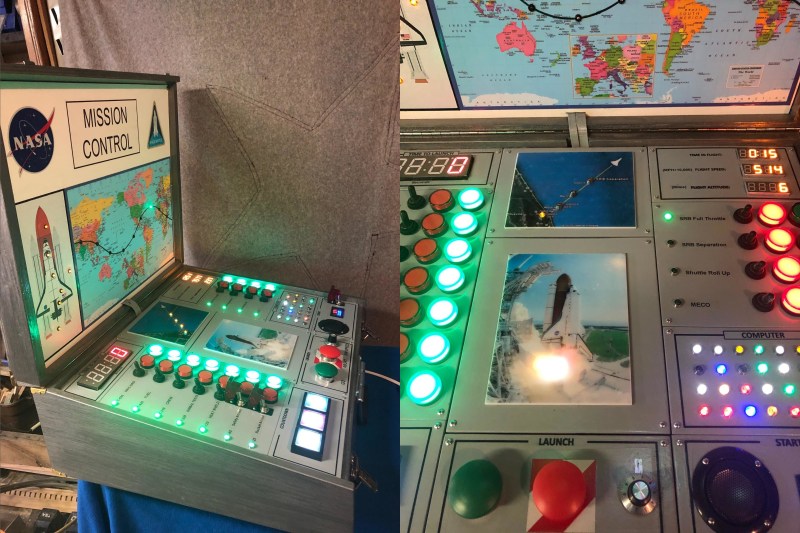A lot of electronic busy boxes that are built for children are simply that — a mess of meaningless knobs and switches that don’t do much beyond actuating back and forth (which, let’s be honest, is still pretty fun to do). But this Mission Control Center by [gcall1979] knocks them all out of orbit. The simulation runs through a complete mission, including a 10-minute countdown with pre-flight system checks, 8.5 minutes of powered flight to get out of the atmosphere that includes another four tasks, and 90 minutes to orbit the Earth while passing through nine tracking stations across the world map.
That’s a lot time to keep anyone’s attention, but fortunately [gcall1979] included a simulation speed knob that can make everything go up to 15 times faster than real-time. This knob can be twiddled at any time, in case you want to savor the countdown but get into space faster, or you don’t have 90 minutes to watch the world map light up.
The main brain of this well-built box is an Arduino Mega, which controls everything but the launch systems’ mainframe computer — this is represented by bank of active LEDs that blink along with the voice in the sound clips and runs on an Arduino Uno and a couple of shift registers. To keep things relatively simple, [gcall1979] used an Adafruit sound board for the clips.
We love everything about this build, especially the attention to detail — the more important pre-flight tasks are given covered toggle switches, and there’s a Shuttle diagram that lights up as each of these are completed. And what Shuttle launch simulator would be complete without mushroom buttons for launch and abort? Grab your victory cigar and check out the demo video after the break.
Is your child too young to be launching the Shuttle? Here’s an equally cool busy box with toddler brains in mind.

















I will point out that no toddler is too young to launch the shuttle (or at least a simulation of one).
Next he should make an ICBM launch sim.
“Would you like to play a game?”
Shall we play a game? -WOPR
Looks like we both thought of the same thing at roughly the same time. I may have goofed up on the quote, however.
Coolest toy ever. Kudos to the builder! Even at my advanced age I want to play with that!
I really, really, really like the UI design here. The attention to detail far surpasses all of the projects I have ever built. The font looks era-correct and that really sells the whole thing.
But the white and blue LEDs are anachronistic
They would have used white or blue light bulbs for white and blue annunciators. And back in the days, there were actually blue bulbs in a 5mm LED form factor.
But they had common sense back in the days. Bright blue annunciators are just hard on the eyes, no matter how cool they might look.
To challenge the accuracy of the simulation, i dare to say it must have a probability to explode shortly after take-off.
That is pretty darn cool, neat idea. I’ve got a wannabe mission controller who would love something like that.
daddy, when do I get to play?
No. Please don’t tell/train your kids these things are good.
This was supposed to be an answer to the ICBM comment…
To be fair, some people would argue that it applies equally well to the Shuttles.
This is better than the actual North Korean space programme, no really.
This is out of this world
Now we know why some of the Starships have been crashing and exploding… 😄
This is really cool. IMO it would be great to interface this with the launch of an Estes model rocket :-) I would give more interaction than just hitting the button to launch it.